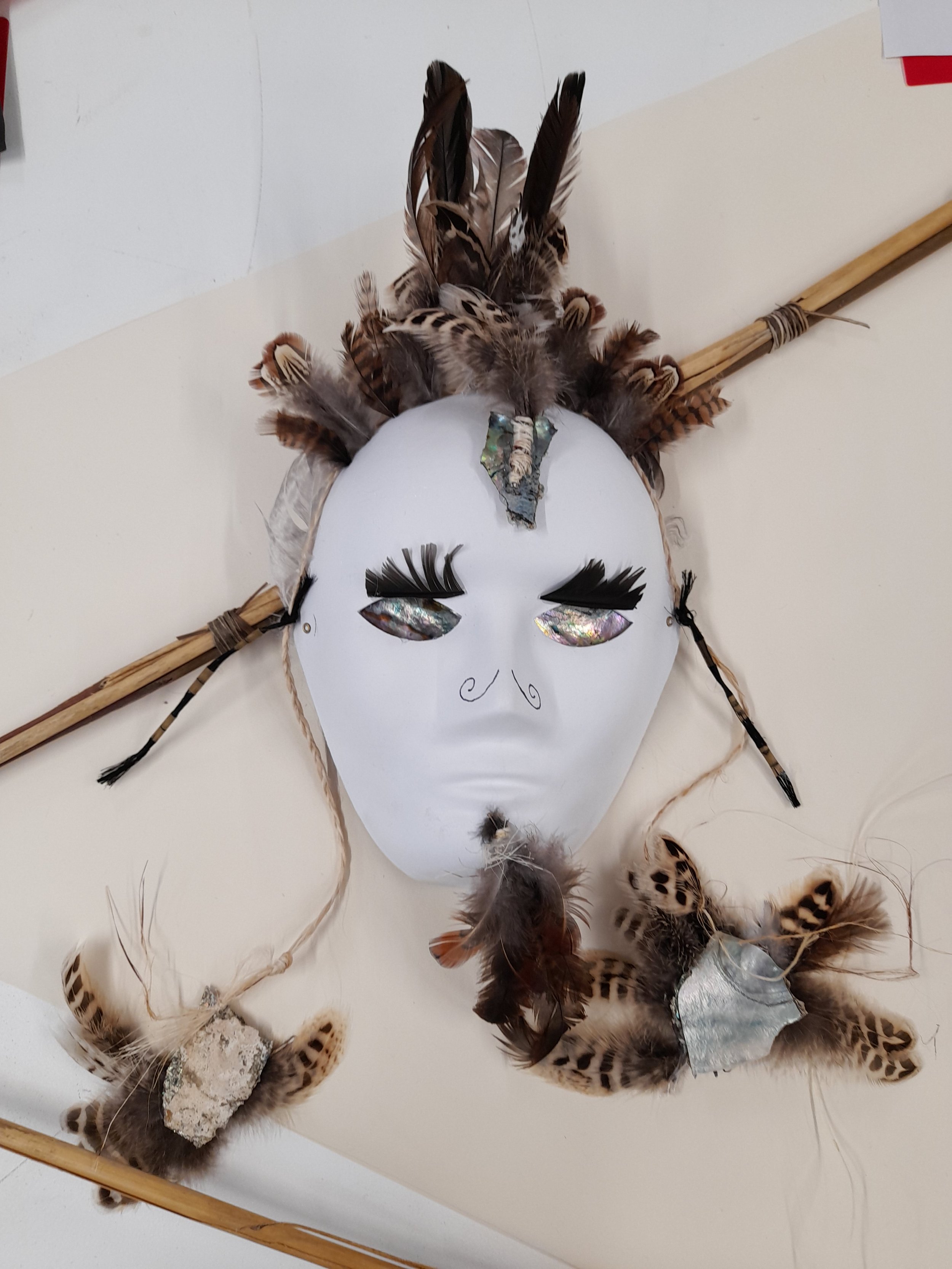Wānanga Manu tukutuku and Manu Aute
Holiday programme day
Otago Youth Wellness held a wānanga manu tangata (bird man kite workshop) for one of our holiday programme days, led out by our case worker Anita Mitchell (Tainui, Ngāti Maniapoto), who is an occupational therapist (OT).
The goal was to allow our rangatahi to be able to tell a story using Māori concepts and designs. The manu tangata kites were based around manu tukutuku (tukutuku is a stitching technique) and manu aute (aute is a paper bark).
Otago Youth Wellness has been developing small group workshops in various forms as a way of building social connection for our rangatahi.
Through her OT lens, Anita says using mahi raranga (weaving) brings a medium to facilitate social and cultural connection on a range of levels. There is an OT philosophy: Do-Be-Become-Belong.
“For our rangatahi one or more of these concepts might be applicable.
“For those who had been to more than one holiday programme they felt a sense of belonging. They showed that by helping me to explain to the newcomers the culture around safety. From that sense of belonging they have, they have also grown strong enough to overcome their fears.
“And they have shown a level of tuakana-teina relationships.”
Anita enjoys teaching raranga because it so strongly includes an aspect of wairua. The approach links to Te Whare Tapu Wha model.
“I really enjoyed that by grading the activities, we could facilitate every type of learner and every kind of person coming through – they could work in groups, one-on-one or how they liked.
“The grading aspect covered the myriad of physical, psychological, spiritual aspects in an envrionment that enables whakawhanaungatanga. It really created an exceptionally safe place for people to express themselves and have a bit of fun!”
The Wellness space was broken into three stations:
painting manu aute,
masks – faces for the kites and
the feathers – karere (feather messengers) and raukura (bundles of feather plumes)
Rangatahi were given examples of patterns with descriptions and then made up their own stories. The entire wānanga was according to Māori tikanga including karakia before and after, keeping kai separate and teaching our rangatahi how and why we respect our resources.
The rangatahi who took part in the day enjoyed the new learning of different creative skills and there was an air of calm and discovery in the room.
In their words this is what they experienced:
“It felt like we were sitting at the family kitchen table.”
A Manu Aute creation, with a kowhaiwhai around the edges to represent growth and new learning, a waka (canoe) and Matariki stars in the middle:
“I wanted it to represent my family. The Matariki stars as it is a commonly celebrated Maori tradition. The three oars represent me and my sisters. And also the 3Rs in Carisbrook logo.
“I liked the design because it has important meaning to it.
“The waka represents whanau, three oars me and my three sisters.”
This rangatahi also created the piece to celebrate those who have passed in their family in the past year.






